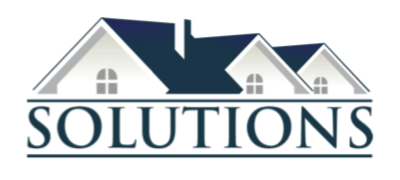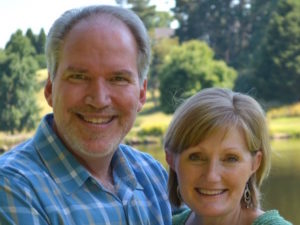Doctor Mortgage Loan
Here in Charlottesville, we are home to the University of Virginia Hospital, one of the premier teaching hospitals in the state and on the East Coast. Every year in the United States,16,000 new doctors graduate from medical school and about the same number graduate from residency.
Every year here in March, know as “Match Day,” we see a new crop of residents rushing out to purchase homes after they receive word that they will stay at UVA. Just as many also are looking to sell these homes after their residencies are done.
These residents have little money, haven’t had the time to become more financially literate, have vast sums of future earnings potential, and, best of all, almost all of them will soon purchase a mortgage.
Yet, by standard criteria, they will have a difficult time securing a mortgage. They don’t have anything to put down, they have a ton of debt already, and have no proven earnings. They usually haven’t even started their job yet when they buy a home in a new city.
This is where the so called “Doctor Loan” has come into play.
Several lenders have created a program that allows these high future-earners to buy a mortgage as the chances of them defaulting are very low (0.2%-much lower than a standard borrower) and they’ll soon need someplace to do their banking and investing, too.
Although these loans might have a slightly higher interest rate and fees, most residents will take out these loans as they don’t have many other options anyway.
What is a doctor’s loan?
Typically limited to a new resident, new attending (7-10 years out of residency or less), or dentist only (although some offer loans to veterinarians, optometrists, podiatrists, and even attorneys and many lenders will lend to a doctor at any stage of his career, or even for a second home), it requires little money down (0-5%) and doesn’t require the borrower to purchase mortgage insurance (PMI)
Most lenders will accept a contract as evidence of future earnings (instead of pay stubs the doctor doesn’t yet have), but may require the physician to open a bank account at the bank from which the mortgage is paid by auto-draft.
There are a few types of homes that such a resident is occasionally restricted from, such as condos, but in general these loans can be used for any home. The loan has the same rate whether loan amount is above or below the “jumbo loan” limit.
Some programs allow residents to use gift money for a down payment, for required reserves, or for closing costs, but it requires cash reserves equivalent to a few months of principle, interest, taxes, and insurance (PITI), a reasonably good credit score, and a loan payment to income ratio of less than 38% (as high as 50% with some lenders)
This loan often doesn’t calculate student loans toward the loan to income ratio or uses a modified payments similar to the Income Based Repayment/Pay As You Earn calculation.
Update (12/2023): We have at least one local lender offering loans at 100% up to $1.5 mil, 95% up to $2 mil and 90% up to $3 mil.
Where can you get one?
There are a number of banks and agents who can assist you with a doctor’s loan. Each of these only offers loans in certain states, so there might only be one or two of these options available to you. The selection process is made much easier by the fact that only a few lenders will likely be available in your state.
NOTE: Asking your Solutions Agent for a recommendation makes a lot of sense as we work with a wide variety of both local and national lenders.
How do rates and fees compare?
The doctor’s loan rate generally has the highest one, but the down payment is the smallest (some programs as low as zero down). The fees are where things get really blurry and hard to compare.
An FHA and a conventional loan with less than 20% down require mortgage insurance, which is not tax-deductible for those with incomes over the phase out range of $100-109K.
It’s often hard to tell if you’re better off paying mortgage insurance or a higher rate/fees. It is much easier to get rid of origination/funding fees by putting 20% down, most other loans, including the doctor’s loan, will hit you with these fees. (Although at least one doctor’s loan will waive this if you’re willing to pay a higher interest rate.)
The doctor’s loan rate is currently about 1/4% higher than a comparable FHA/VA loan. But if you compare the rates and fees to a conventional 20% down loan, you’re in for some sticker-shock.
For example, a recent Amerisave rate for a no-fee, no-points, non-jumbo 30 year fixed loan has been around 4.5%. A similar doctor’s loan can be offered at, say, 5.375%. That might not seem like much, but over 30 years on a $500,000 home, that is a lot of money. With the doctor’s loan, you’ll pay $508,000 in interest.
If you put 20% down, you’ll only pay $330,000 in interest because it is a smaller loan and a better rate. Plus, you don’t have to pay the extra $5,675 in fees up front. That money compounded over 30 years at 8% is another $57,000. So the benefit of using a regular 30-year fixed loan with 20% down could be as much as $235,000 on a $500,000 home. This, of course, ignores the opportunity cost of that $100,000 down payment, which we’ll discuss below.
Should I get a doctor’s loan?
Most residents and fellows should rent instead of buy for several reasons. First, you’ll probably only be in that location for 1-5 years. It usually takes at least 5 years to break even on a home, obviously more if a real estate bubble bursts on you.
The best resource to see how long it will take to break even in your particular circumstances is the New York Times Buy vs Rent Calculator. Even if you decide to stay in the same area as an attending, attendings don’t usually like to live in their “resident home” once their income quadruples.
Second, a resident/fellow doesn’t make very much money and so usually takes the standard deduction on their taxes. That means the mortgage interest is NOT deductible. Even if you itemize, most of your interest probably isn’t going to be deductible. That increases the effective cost of your shelter.
Third, homes require maintenance (expect 1% a year), which requires time and money, neither of which are abundant to a resident.
Fourth, there is a lot of hassle and expense involved with buying and selling a home. Renting a home is quick and easy by comparison.
If you’ve ever tried to sell a home in a down market you know how tough it can be to sell it at any price, much less a reasonable one. Plus, there is a great deal of flexibility with renting. If you don’t like the neighborhood, you just move. At worst, you’re in for a one year contract.
New attendings, on the other hand, are much more likely to stay put and the interest is much more likely to be fully or nearly-fully deductible. The buy/rent ratio sways heavily toward buying for most.
If you’ve decided to buy a home, you should give serious consideration to putting 20% down and getting a conventional mortgage. The improved monthly cash flow will allow you a great deal of financial freedom and ability to invest (and even spend.)
You’ll save hundreds of thousands on interest over the life of the loan, all guaranteed, unlike investing a potential down payment elsewhere. But if, for whatever reason, you’re going to buy a home AND you can’t or don’t want to put 20% down, then a doctor’s loan is a reasonable option and at least as good as the other non-20%-down options.
An example of a typical doctor’s loan
* Fixed or adjustable-rate options
* Up to 100% financing and no monthly mortgage insurance payments
* Favorable repayment terms provide flexibility to meet your financial reality
For Licensed Residents/Interns/Fellows in MD and DO programs, we offer:
* Maximum of 100 percent financing for purchases and rate/term refinances
* Maximum home loan amount varies by lender
For Practicing Doctors (MD, DO, DDS, DMD):
* 100% financing for loans up to $1.5 Million
* 95% financing for loans up to $2 Million
* 90% financing for loans up to $3 Million
What you’ll need to consider:
* State law may put further restrictions on maximum loan-to-value ratio
* Adjustable-rate mortgages have interest rates that may increase during the life of the loan
* 100 percent mortgage financing will result in no property equity until the borrower pays down the loan principal through regular mortgage payments and/or the property value appreciates
* A down payment may be required if the property is located in a declining market
Many approved doctor’s loan lenders offer competitive rates, zero down payment, do not count your full student loans against you, no PMI, allow for higher debt ratios, allow you to qualify based on your new income months before you even begin your new job, and much more.
Research has shown that physicians with high credit scores have a very low risk of default on residential mortgages even if they have high debt, higher ratios, few assets and/or buy a home with little to no money down. Normally these items cause concern for underwriters who may approve the loan, but at higher rates. With a unique financial position that is normal to doctors their rate of default on mortgages is still much lower than any other occupation.

